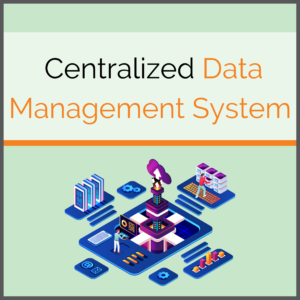
A single point of truth (SPOT) for data or document management is a must in highly regulated markets combined with increasing digitalization. Even small and mid-sized companies can hardly avoid this if they want to keep up with the market.
There are numerous small and mid-sized companies (SMEs) with just a few or niche products in the pharmaceuticals or MedTech sectors. For a long time, analog systems were primarily the means for quality management and document exchange between manufacturers and producers/CMOs. The pharmaceutical industry already had its deadline in February 2019 for the serialization, and thus, for the digitalization of its data management and processes. But for the medical technology industry, the deadline is coming up this year.
Complexity through MDR
The new regulations came into force on 26 May 2021 with the Medical Device Regulation (MDR). They are changing a lot for the MedTech industry. In addition to more complex product classification requirements, there is the need to digitize and centralize processes and networks.
Today, manufacturers and producers of medical devices exchange most of their documentation via paper. However, the system of thickly filled folders at several points in the supply chain bears the risk of errors and a growing amount of work with the increasing requirements. Also, even small changes must be kept up to date on both sides.
Besides, MDR makes more products subject to labeling, and even minor changes, such as name, product version or quantity, or warning notices, must be noted and result in new UDI assignments. Consequently, it increases the exchange volume between manufacturer and producer per product (variant) enormously. In addition, all changes, documents, and data must be stored for the entire life cycle of a product. If necessary, they have to be updated not only by manufacturers and producers but also in the EUDAMED database. Therefore, it makes sense to have a central and synchronous place to administrate documents, where all partners can access the relevant data.
Single Point of Truth
The principle of a SPOT or SSOT is based on the necessity to maintain an authoritative data set. It can be accessed by all parties involved in a supply chain simultaneously and from any location. Thus, data is only changed and stored in one place so that everyone within a production process is up to date.
SPOT in the MedTech Industry
SMEs face the challenge of having to meet the exact requirements as big companies. They must continuously adapt to regulatory innovations or changes if they want to continue to operate in the market.
The MDR does not provide a general SPOT connecting all producers, manufacturers, and authorities. The EUDAMED database takes on a central task and is the SPOT in which data from manufacturers and doctors are brought together. How exactly manufacturers keep data synchronized internally and with partners is, however, the responsibility of the respective manufacturer. They must therefore ask themselves where they can establish their SPOTs.
Manufacturers must be able to exchange data and documents with their producers in a simple and orderly process. A SSOT prevents erroneous data records and can reduce the amount of work in a digital, standardized form. Also, data and documents of a medical device are centrally stored and managed. Thus, they are always kept up to date for all parties involved in the supply chain. As a result, everyone works with the same documents, and the current data can be reported to authority platforms such as EUDAMED all the time without increased administrative effort. Thus, there are many advantages of a centralized data management system.
Do you also need help with the introduction to EUDAMED? Initially, the EU’s elaborate database can seem overwhelming. To help you navigate and comply with the MDR, we offer an individual EUDAMED Workshop. Contact us for a non-binding consultation.